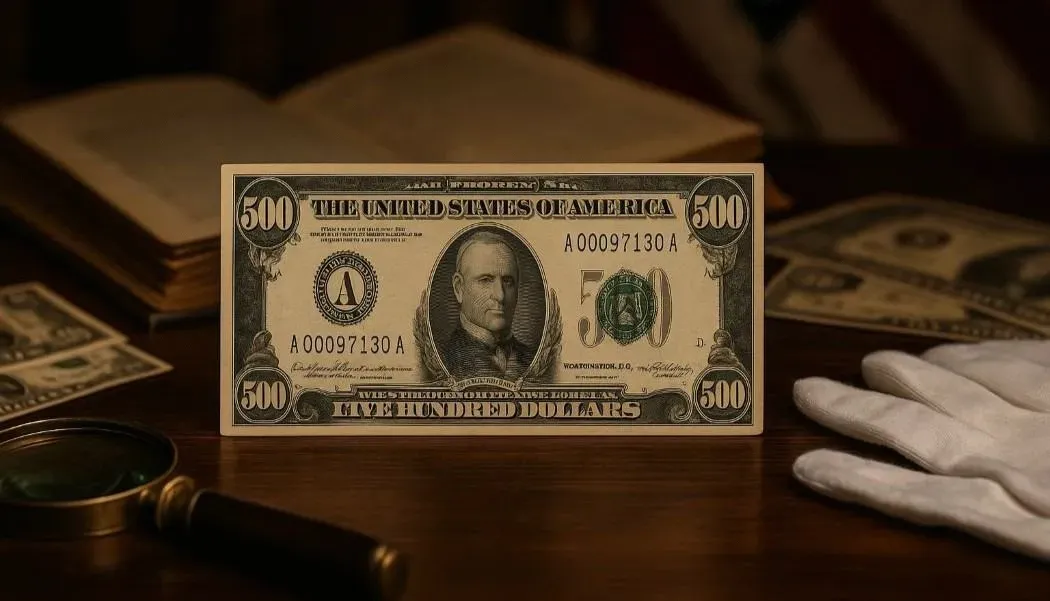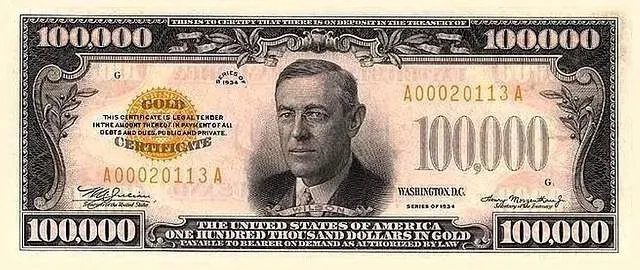The Enduring Allure of the $500 Bill: A Numismatic Classic

A Rare Relic of American Currency
The U.S. $500 bill stands as one of the most captivating and elusive pieces of American monetary history. Although it vanished from circulation more than half a century ago, its mystique continues to inspire collectors, historians, and investors alike. Officially discontinued in 1969 and last printed in 1945, the note remains legal tender—but its market value far exceeds its face denomination. For numismatists, the $500 bill represents a tangible link to an era when large-denomination currency fueled commerce and symbolized economic confidence.
From Early Roots to Iconic Designs
The lineage of the $500 note reaches back to America’s early years. Both North Carolina and Virginia issued similar-value notes in the late 1700s, reflecting the young nation’s evolving monetary needs. Through the 19th century, various series featured notable American figures such as John Quincy Adams, Joseph Mansfield, Charles Sumner, and Abraham Lincoln, each design marking a distinct period in the country’s artistic and political landscape.
One of the most distinguished issues, the 1918 Blue Seal Note, showcased Chief Justice John Marshall on the obverse and Hernando de Soto Discovering the Mississippi on the reverse—a design that captured the spirit of exploration and discovery. By 1928, the William McKinley portrait became standard and remains the most recognized version today. Collectors prize well-preserved examples, with high-grade specimens regularly commanding premium prices in the numismatic marketplace.
Why the $500 Bill Existed
Large-denomination bills—including the $500, $1,000, $5,000, and $10,000 notes—were never intended for everyday commerce. Instead, they served as efficient tools for bank-to-bank settlements long before the digital era. Financial institutions relied on these notes to transfer significant sums quickly and securely.
Among this elite group, the $500 bill was the smallest denomination, while the most exclusive was the $100,000 Gold Certificate featuring Woodrow Wilson, used only for internal transactions between Federal Reserve Banks. These high-value notes embodied both practicality and prestige, illustrating how the banking system once moved immense amounts of money through paper instruments.
The Decline of Large-Denomination Currency
By the mid-20th century, the age of large notes drew to a close. After World War II, policymakers grew concerned about their potential misuse in tax evasion, organized crime, and money laundering. Production ceased in 1945, and in 1969 the Federal Reserve officially retired all high-denomination bills, citing “lack of use.”
Technological progress made the decision inevitable. Electronic transfers and digital banking rapidly replaced physical transactions, offering greater speed and security. The $500 bill, once a symbol of financial sophistication, became a historical artifact—its discontinuation marking a transition from tangible to electronic money.
Is the $500 Bill Still Spendable?
Yes—technically, the $500 bill remains legal tender in the United States. However, few would ever exchange one at face value. Collectors pay many multiples of its printed worth, depending on condition, series, and rarity. These notes are admired not only for their scarcity but also for the meticulous artistry of their engraving, portraiture, and design. Each one captures the craftsmanship and national identity of its era, making every surviving example both a monetary relic and a work of historical art.
Market Values and Auction Highlights
Market demand for the $500 bill remains robust, with prices heavily influenced by series, condition, and provenance.
🔹1918 Blue Seal $500 Bill – In 2019, Heritage Auctions achieved a record price of $180,000 for a Gem Uncirculated 66 PPQ specimen.
🔹1934 Federal Reserve Note – In 2024, a note discovered tucked inside a family Bible sold for $20,000, illustrating how condition and provenance affect desirability.
🔹 Circulated Issues – Typical examples still bring $3,000–$5,000, while rare high-grade survivors can fetch significantly higher sums.
Such results affirm that collector enthusiasm remains strong. The $500 bill has evolved from a banking instrument into a tangible investment—its value determined by scarcity, preservation, and the enduring fascination it inspires.
Why the $500 Bill Still Matters
Although obsolete in commerce, the $500 bill endures as an icon of U.S. monetary history. It reflects an age when paper notes symbolized trust and economic power, and it mirrors the transformation of money from physical exchange to digital transaction.
For collectors, owning one is a connection to America’s financial past—a piece of history preserved in ink and fiber. Each bill tells a story of innovation, policy shifts, and changing technology. To hold one is to hold a chapter of the nation’s evolving economy.
The $500 Bill: A Symbol of Rarity and Legacy
The $500 bill remains far more than a discontinued piece of paper—it is a timeless numismatic treasure. Its journey from circulation to coveted collectible mirrors the modernization of American finance. Although no longer necessary for banking, its prestige lives on through passionate collectors who safeguard its legacy for generations to come.
Whether admired for its artistry, its rarity, or its historical importance, the $500 bill endures as one of the most distinguished and sought-after denominations in the history of U.S. currency.
FAQ: Understanding the $500 Bill
Was there really a $500 bill?
Yes. Multiple series were issued between the 18th and 20th centuries, most famously the 1928–1945 William McKinley notes.
Why was it discontinued?
In 1969, the Federal Reserve ended issuance of high-denomination notes as electronic banking made them obsolete and concerns about illegal use grew.
How much is one worth today?
Values range from about $1,000–$1,500 for circulated notes to several thousand dollars or more for uncirculated or rare varieties.
Who appeared on the $500 bill?
The 1928 and 1934 issues featured President William McKinley, while earlier versions displayed figures such as John Marshall and John Quincy Adams.
Can it still be spent?
Yes—it remains legal tender, though collectors would pay far above face value.
What’s the rarest version?
The 1918 Blue Seal Federal Reserve Note featuring John Marshall is among the most prized, especially in high grade.
Were larger bills ever printed?
Yes. The U.S. also issued $1,000, $5,000, $10,000, and the $100,000 Gold Certificate used solely between Federal Reserve Banks.
Where can I buy or sell one?
Seek out established numismatic dealers or auction houses specializing in U.S. currency. Authentication through PMG or PCGS is recommended.
How can I confirm authenticity?
Examine paper quality, serial numbers, and engraving detail. Certified grading ensures both authenticity and preservation.
Why do collectors treasure it?
Beyond its value, the $500 bill embodies America’s financial evolution—a rare artifact uniting artistry, history, and investment appeal.
